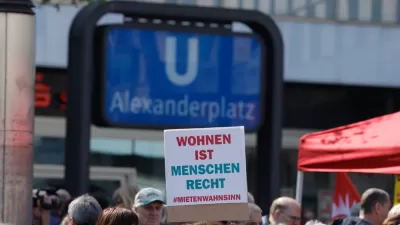There is hidden economic diversity even in one of the most famous (and toniest) of zip codes.
In 1998, when Slums of Beverly Hills was released, I lived in West Los Angeles, relatively near (in LA terms, at least) Beverly Hills. It’s a comedic “coming of age” story about a girl whose kooky and "economically deficient" family moves to an apartment at the outer edge of Beverly Hills, “for the good schools,” as her father says.
At the time the movie came out, one of my friends actually lived in a rent controlled apartment in the so-called "slums" of Beverly Hills and described her cluster of apartments as inhabited by an eclectic mix of folks–seniors, some UCLA students, some Hollywood aspirants/burnouts, and a mix of immigrant families (mostly Russian and Latino, to her eyes and ear). So, even though I never saw the movie, the notion of “slums” in Beverly Hills has stuck with me.
Over the years, as various policy-wonk and think-tank types and even the President have said that your zip code should not determine your destiny–typically in the context of the health and economic mobility of low-income people who live in low-income zip codes–I’ve always wondered about the destinies of low-income folks from places like Beverly Hills. And it’s come to stand as a shorthand in my mind that, even in one of the most famous and toniest of zip codes, 90210, there is hidden economic diversity.
FULL STORY: Gentrification and the “Slums of Beverly Hills”

Alabama: Trump Terminates Settlements for Black Communities Harmed By Raw Sewage
Trump deemed the landmark civil rights agreement “illegal DEI and environmental justice policy.”

Study: Maui’s Plan to Convert Vacation Rentals to Long-Term Housing Could Cause Nearly $1 Billion Economic Loss
The plan would reduce visitor accommodation by 25% resulting in 1,900 jobs lost.

Planetizen Federal Action Tracker
A weekly monitor of how Trump’s orders and actions are impacting planners and planning in America.

Wind Energy on the Rise Despite Federal Policy Reversal
The Trump administration is revoking federal support for renewable energy, but demand for new projects continues unabated.

Passengers Flock to Caltrain After Electrification
The new electric trains are running faster and more reliably, leading to strong ridership growth on the Bay Area rail system.

Texas Churches Rally Behind ‘Yes in God’s Back Yard’ Legislation
Religious leaders want the state to reduce zoning regulations to streamline leasing church-owned land to housing developers.
Urban Design for Planners 1: Software Tools
This six-course series explores essential urban design concepts using open source software and equips planners with the tools they need to participate fully in the urban design process.
Planning for Universal Design
Learn the tools for implementing Universal Design in planning regulations.
Caltrans
Smith Gee Studio
Institute for Housing and Urban Development Studies (IHS)
City of Grandview
Harvard GSD Executive Education
Toledo-Lucas County Plan Commissions
Salt Lake City
NYU Wagner Graduate School of Public Service





























